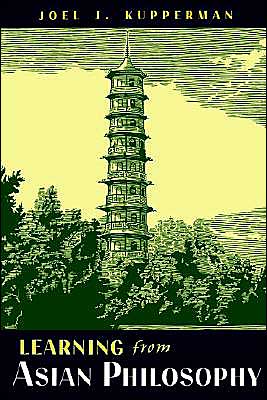

 |

|

The average rating for Learning from Asian Philosophy based on 2 reviews is 4.5 stars.
Review # 1 was written on 2013-03-11 00:00:00 Erik Richards Erik RichardsI was taught by Neville and, even if this is not one of his best books in terms of craft (it was assembled from various essays, lectures, etc.), it is characterized by his typical breadth of vision and deep insight - even as he admits, with a sureness I lack, just how modest his achievements really are in face of the awesome task of comparative, integrative philosophizing. Only such philosophizing can bring forward what is living in the world's many traditions to (hopefully) meet the challenges of living in a world our ancestors could not have imagined - a world we ourselves struggle to imagine even as we bring it into being. I am using the book in an upper-level undergraduate course in comparative philosophy. Although some chapters can start to seem like exercises in name-checking, they provide helpful orientation to some of the important work that has gone on in Chinese-Western comparative philosophy to date. Other chapters are excellent introductions to major themes and figures of Chinese, especially Confucian, philosophy. Still others show Neville rehearsing and further developing his own project with inspirational help from his Confucian predecessors. This is not one of Neville's best books, but it still is a very good book. |
Review # 2 was written on 2018-04-26 00:00:00 Alberto Duran Alberto DuranI'm an unbeliever and have been since the first time I played hooky from Sunday services and the Eye in the Sky didn't say boo. So it may seem strange that I'm reviewing the Tao Te Ching, the widely known and influential Taoist text, written by Lao-Tzu and poetically translated in this edition by Stephen Mitchell. For me, the Tao Te Ching is more folk wisdom than religious treatise and is more useful than a million sermons. Where the Tao Te Ching parts company with religious attempts at morality such as the 10 Commandments is in its inclusiveness. Seven of the 10 Commandments don't mention God and are sound advice designed to facilitate peaceful community relations: respect your elders, don't kill, don't cheat on your spouse, don't steal, don't tell lies, and don't lust after another's spouse or his belongings. For me, the tragedy of the Great List is that the three that top it serve only to divide the world into believers and nonbelievers: regardless how closely you follow the last seven, if you don't believe in God you're not worth a fig. In doing so the first three create division where the last seven seek harmony. With Taoism, even if you don't believe in the Force-like nature of the Tao'and in case there's any question, I don't'you can still consider yourself a Taoist. Taoism seeks harmony by freeing the individual from the caustic effects of judgmental thinking, desire, and greed, and its fulcrum is the concept of "non-action," or literally "doing not-doing." Non-action, Mitchell writes in his introduction, is not the act of doing nothing but instead is the purest form of action: "The game plays the game; the poem writes the poem; we can't tell the dancer from the dance." This slim book is both a quick read and a long study. Mitchell's lyrical rendering of the Tao Te Ching might read to some like silly hippie clichés, but there's more to it than that. Take chapter 9, a photocopy of which hung on my office corkboard for years: Fill your cup to the brim and it will spill. Keep sharpening your knife and it will blunt. Chase after money and security and your heart will never unclench. Care about people's approval and you will be their prisoner. You can almost see the hacky sack and smell the patchouli. But there's a truth to it that, if grasped, will change the way you think. As chapter 1 states: "The tao that can be told is not the eternal Tao./The name that can be named is not the eternal Name." Analogy, then, plays an important role in understanding the Tao Te Ching, and the reader has to do quite a bit of work'the long study part'to fathom the book's richness. Take chapter 11 in its entirety, where non-action is discussed: We join spokes together in a wheel, but it is the center hole that makes the wagon move. We shape clay into a pot, but it is the emptiness inside that holds whatever we want. We hammer wood for a house, but it is the inner space that makes it livable. We work with being, but non-being is what we use. There is more to the book than philosophical abstraction. In fact, common sense pervades the Tao Te Ching. Take these lines, which discuss the roots of crime: "If you overvalue possessions, people begin to steal" (chapter 2) and "If you don't trust the people you make them untrustworthy" (chapter 17). Or these, from chapter 38, which describe the toll of illusory thought: When the Tao is lost, there is goodness. When goodness is lost, there is morality. When morality is lost, there is ritual. Ritual is the husk of true faith, The beginning of chaos. Therefore the Master concerns himself with the depths and not the surface, With the fruit and not the flower. He has no will of his own. He dwells in reality, and lets all illusions go. I'm telling you, had I been born into Taoism I might actually believe in something. |
CAN'T FIND WHAT YOU'RE LOOKING FOR? CLICK HERE!!!